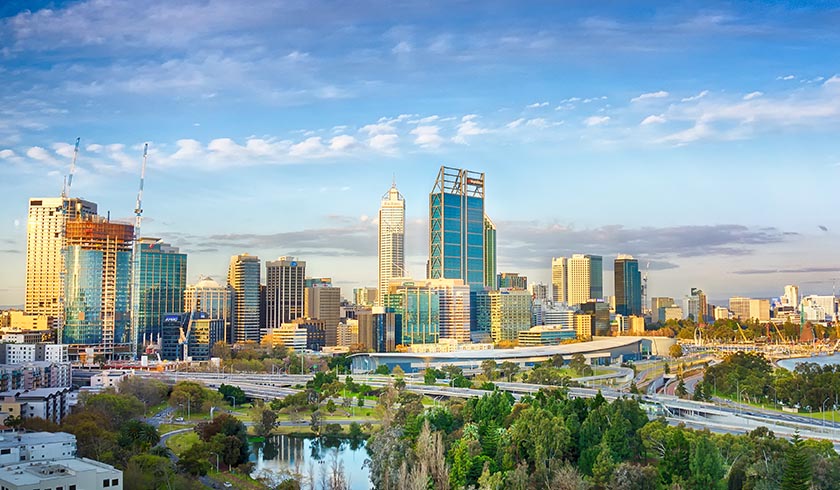Want to invest in WA? Here’s what you need to know
As Western Australia prepares to exit its COVID-induced isolation from the rest of the country, Damian Collins, president of the Real Estate Institute of Western Australia (REIWA), provided prospective investors with some insights regarding what to expect in 2022.

Speaking on a recent episode of The Smart Property Investments Show, he flagged three things potential investors need to be aware of in the Perth market:
Potential for growth
CoreLogic reported that prices in Perth grew by 13 per cent over the course of 2021, although Mr Collins says many in the industry suspect that number to be closer to 20 per cent. And while that growth isn’t as high as the 30 per cent experienced in Brisbane or Sydney, the growth is still welcome after six years of declining property prices.
“Perth is coming off the back of about five or six years of pretty miserable conditions, just a slow, slow, steady decline. Not rapid, but it was painful. It would flat line and you would think, ‘Well, maybe we have reached the bottom’, and then it would have another leg down,” Mr Collins said on The Smart Property Investment Show.
REIWA is forecasting that 2022 will be another strong year of growth for the Perth property market, forecasting a 10 per cent growth across the year, and Mr Collins believes that this growth will continue across the next two to three years and will see house prices rise from the current median of $528,000.
“Certainly in the next two or three years, we could see the median price go from $520 to certainly into the mid-to-high sixes, which will get us a bit more around parity with Brisbane, which is where we should be,” he said.
An undersupplied market
Mr Collins does warn investors that the current Perth market is massively undersupplied. He states that this undersupply occurred as a result of the population growth the state experienced during COVID. This increase in the state’s population, as international or domestic expats returned to the state to escape the pandemic, as well as the previous downturn in the property and construction industry, has resulted in an undersupplied market.
“When you have a five or six-year downturn that’s the longest and deepest downturn, the building industry was decimated. Lost so much labour. And of course, the mining sector was picking up, so a lot of people had said, ‘Well, I can earn 100 grand or 80 grand a year being a tradie on a building site, or I can get $140[k by going] up north,” he said.
Current REIWA data indicates that the vacancy rate within Perth is at an all-time low of 0.7 per cent, and Mr Collins predicts this issue will become increasingly pertinent once the borders reopen.
“We just can’t build the houses. A home that used to take nine months to build is now taking almost two years. And I certainly think when the borders open up, that’s going to be problematic. We just won’t have enough housing. We can’t get enough supply in the market, and that’s going to certainly, I think, fuel further price growth in 2022,” he said.
Who is buying Perth property?
Mr Collins outlined that there was not one specific dominant buyer within the current Perth market, but rather three main groups purchasing property. The first major buyers’ group is current home owners, who are capitalising on current low-interest rates to upgrade their existing homes.
“You can’t quite get a loan now for 2 per cent, but not far off. As an owner-occupier going, ‘Gee, if I borrow a million dollars more, that’s $20 grand a year in interest. That’s 400 bucks a week.’ So, people are taking that chance to upgrade from a million to $2 million, or $750[k] to $1.25 [million],” he said.
Mr Collins also states that the tightening rental market has seen a rise in first home buyers entering the market, with approximately 40 per cent of the Perth market first home buyers as opposed to 15 per cent of Sydney’s market.
Mr Collins believes that this large proportion is due to the combination of low-interest rates and low house prices.
“People were going, ‘well, why would I pay $450 or $500 a week rent when I can buy a home that is going to cost me $250 in interest payments?’,” he said.
As for investors in the Perth housing market, Mr Collins says they are slowly making their return to the state, particularly towards the second half of the year as the state’s borders begin reopening. Relatively high rental yields of 5 per cent, as opposed to mid 2 per cent for Sydney and Perth, is a major factor in enticing investors into the Perth market.
Listen to the full conversation with Damian Collins here.
